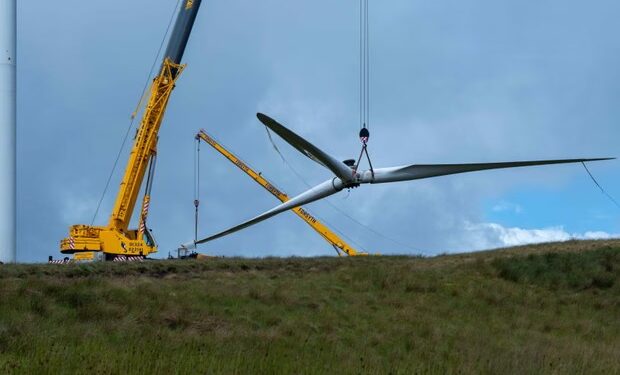As Europe’s early generation of windfarms begin to reach the end of their working lives, attention is turning to one of the sector’s most pressing environmental problems: what to do with thousands of giant turbine blades made from hard-to-recycle carbon fibre.
Why turbine blades pose a recycling problem
Wind turbine blades are built for strength and endurance, combining carbon fibre and fibreglass to withstand decades of powerful gusts and storms. These same qualities, however, make them difficult to break down or repurpose once retired. Unlike steel towers, which can be melted down, blades resist conventional recycling. Many have ended up in landfill or been cut and buried—an option increasingly regarded as unsustainable given Europe’s climate commitments.
Scale of the issue in the UK and Europe
The UK, with more than 14,000 onshore and offshore turbines, faces a mounting volume of waste. Industry analysts estimate that by 2030, tens of thousands of blades—some stretching over 80 metres—will need disposal. Across Europe, the figure could reach hundreds of thousands, raising concerns about both environmental impact and costs. Governments and operators are under pressure to demonstrate that renewable energy infrastructure does not simply exchange one ecological burden for another.
Emerging recycling solutions
Researchers and companies across Europe are racing to find answers. In the UK, pilot projects are exploring ways to repurpose carbon fibre into building materials, lightweight vehicles, and even consumer goods. Meanwhile, in Germany and Denmark, chemical recycling methods are being tested that break down the resins binding the fibres, allowing raw materials to be recovered and reused. Start-ups are also working on grinding blades into pellets for use in cement production, potentially reducing the carbon footprint of the construction sector.
Industry and regulatory response
Windfarm operators are beginning to incorporate recycling obligations into contracts for new projects, ensuring that manufacturers share responsibility for end-of-life disposal. The European Union has signalled that stricter waste directives are likely, and the UK government has commissioned studies into circular economy solutions for renewable infrastructure. Industry groups argue that creating a viable recycling market could even reduce costs in the long term, as recycled fibres find new value chains.
Outlook for a circular wind sector
The challenge of turbine blade waste highlights a broader truth: even clean energy technologies must grapple with lifecycle impacts. While solutions are still in early stages, the urgency of the issue has prompted collaboration between governments, research institutions, and private firms. Success could not only address the waste problem but also strengthen the credibility of wind power as a genuinely sustainable alternative to fossil fuels.
Newshub Editorial in Europe – 17 September 2025


Recent Comments